We are asked to do a little historical survey of abstract art.
Humans, early humans, have been on this planet a few million years, but the earliest record we have of them making any art is found in cave paintings dating from around 40,000 years ago. These are mostly hand stencils and animal figures, but also non figurative forms.
Technology
Visual images have served any number of uses and one of them was to portray accurate replicas of what the eye could see. We called this art, and perhaps art became defined by this function, until the advent of the photograph and a whole host of technological advances that meant the image could be represented accurately at any level of magnification using tools different to the ones of the painter.
This is where abstract art gradually emerged. Pablo Picasso is quoted as saying: “There is no abstract art. You must start with something. Afterward you can remove all traces of reality.”
Artists no longer bound by having to contain their image in a visual reality that could be seen by the eye, started to represent other aspects of reality which could nonetheless be expressed visually and which the painter was perfectly placed to portray.
Modern Movements
MODERNISTS like Wassily Kandinsky, Kasimir Malevitch, Henri Matisse, László Moholy-Nagy and Pablo Picasso wanted to break with tradition and progress into new artistic territory. They were anti-establishment and experimented in different ways but all believed that ‘with the right means, an essential truth could be presented and understood for the benefit of humankind’.
The search for this essential truth seems to have been a driving force behind many of the movements that followed.
EXPRESSIONISM (1905-1920) had two main groups: ‘Die Brucke’ (the bridge) and ‘Der Blaue Reiter’ (the blue rider). The first was founded in Dresden by four students: Fritz Bleyl, Erich Heckel, Ernst Ludwig Kirchner and Karl Schmidt-Rottluff. Their manifesto read: “we want to free our lives and limbs from the long-established older powers. Anyone who renders his creative drive directly and genuinely is one of us.” Their work was semi-figurative. Der Blaue Reiter, led by Wassily Kandinsky placed more emphasis on mysticism. Kandinsky believed openness to emotion could bring connection with the spiritual realm. When Paul Klee met Kandinsky he recorded ” I came to feel a deep trust in him. He is somebody, and has an exceptionally beautiful and lucid mind.”
I felt an unusual serenity whilst trying to copy his painting in my sketchbook and his paintings do seem to me to have a lucid quality.
The members of Der Blaue Reiter believed colours and abstract shapes carried meaning in themselves, much like music. Kandinsky heard music when he saw colour (synaesthesia: two normally separate senses which combine as one)
CUBISM (1909-1914) Georges Braque, Juan Gris, Fernand Léger, Jacques Lipchitz, Pablo Picasso. In Braque’s own words: he and Picasso were like two mountain climbers roped together. They furthered the techniques pioneered by Paul Cezanne. Picasso would emphasize the geometry of things and paint different objects in one work from slightly different perspectives, or parts of an object from different viewpoints. It made the forms look fractured. Braque made landscapes that reduced everything to cubes. They became more geometric, less realistic; they began to fracture the objects into greater number of shapes, called facets, in monochrome beige or grey, to avoid the expressive quality of colour. ‘It was as if Cubists wanted to combine in one work all the past and future views of the subject to get a more real sense of it.’
It is perhaps not surprising that artists, trained to be sensitive to their environment, painted a world that seemed to have decided a simplistic view ought to prevail and would ultimately make sense.
NEO PLASTICISM (1917-1944) Piet Mondrian, Gerrit Rietveld, Bart van der Leck, Theo van Doesburg, George Ventongerloo. Term coined by Piet Mondrian to describe the abstract mode of ‘De Stijl’ (the style), this consisted mostly of grids and black lines that enclosed flat areas of colour and spoke in a radically reduced visual language. This was a group of artists, writers, architects and designers brought together in the Netherlands. De Stijl argued that ‘abstract art predicated on geometric order and spiritual harmony could produce peace and positivity in a European society blighted by suffering.’ Van Doesburg worked with the Bauhaus art school in Germany in the 1920’s. He also adopted diagonal lines in his work, to the consternation of Mondrian who resigned in 1924.
BAUHAUS (1919-1933) Herbert Bayer, Johannes Itten, Wassily Kandinsky, Paul Klee, László Moholy-Nagy. Founder Walter Gropius derived the name from ‘bauen’ (to build) as well as ‘bauhütten’, Germany’s medieval builders’ guilds whose collegiate character he hoped to emulate. Their founding manifesto was to “create the new building of the future which will be all in one: architecture and sculpture and painting.”
Here geometric abstraction became not just more refined but it spread beyond painting. Bauhaus became a commercial success, as long as the political climate allowed it, they produced furniture, wallpaper and textiles. All based on the teachings and ideals of Johannes Itten, Paul Klee, Kandinsky and later Moholy-Nagy and Hans Meyer as well as some of the students turned teacher Joseph Albers and Herbert Bayer. Even when the school was closed down some of the artists took those ideals to Britain and America where some of them became University professors and continued to have an impact.
SURREALISM (1924-1945) Andre Breton’s first manifesto of surrealism proposed it as “psychic automatism in its pure state, by which is intended to express the true functioning of thought. Thought expressed in the absence of any control exerted by reason and outside all moral and aesthetic considerations.” Austrian psychoanalyst Sigmund Freud argued that neuroses were caused by repressed memories and that dream analysis and free association could release them. Breton suggested that the unconscious had a creative potential to revive post war culture. Spanish artist Joan Miró painted bright biomorphic forms instinctively, declaring ‘as I paint, the picture begins to assert itself under my brush’.
ABSTRACT EXPRESSIONISM (1940-1950) Franz Kline, Willem De Kooning, Barnett Newman, Jackson Pollock, Mark Rothko. The term was coined by New York critic Robert Coates in 1946 to describe American painters who invented new idioms of abstract art to communicate their deepest feelings. They rejected geometrical abstraction, their language was more about the crisis of faith stimulated by the conflict. They pursued automatism, letting the unconscious flow, but were influenced by existentialism, in the sense that they saw the artist’s condition as one of isolation and anxiety, rather than the more optimistic surrealism which imagined that neurological equilibrium could be achieved.
POST PAINTERLY ABSTRACTION 1960-70) with Elsworth Kelly and Frank Stella ensued. This was about the anonymous application of paint. Morris Louis pours streams of paint on the canvas not to accentuate gesture but to remove it, the paint does the work of spreading.
POSTMODERNISM (1970-) I mention it here because it seems to have brought to an end the abstract momentum. Post modernists dismiss the notion that any essential truths exist or are possible. Jean François Lyotard explained the term as an “incredulity towards metanarratives”, the doubt that a single ideology could either accurately define our condition or lead to progress.
What I find slightly incongruous is that artists having been given back the freedom to do whatever they wanted, promptly went about trying to define the boundaries of that freedom. For instance the proclamation by the expressionists in Die Brücke (“we want to free our lives and limbs from the long-established older powers. Anyone who renders his creative drive directly and genuinely is one of us”) implies that there are those who are not like them, and therefore not free. But art had been freed from its self-imposed limitation and the absence of a label does not seem to stop the impulse to paint, which is at the base of all movements and has always been there.
Reference: “… isms _ understanding modern art” by Sam Phillips and Wikipedia
edit 26.04.17 with apologies for late reference, also “Cave paintings change ideas about the origin of art” by Pallab Ghosh, BBC /News/ Science & Environment






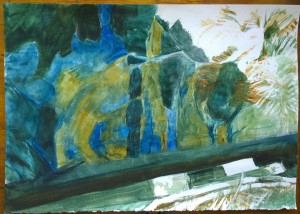






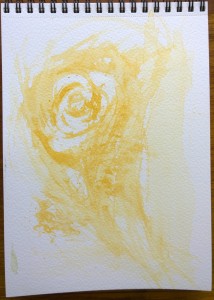

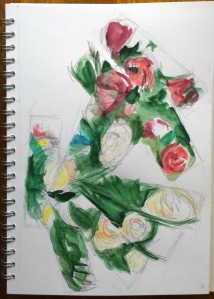
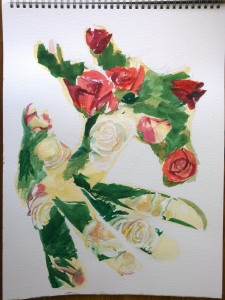

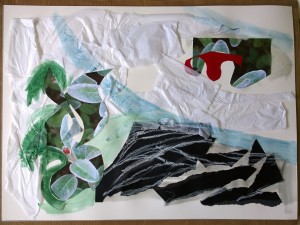
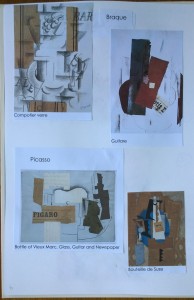

You must be logged in to post a comment.